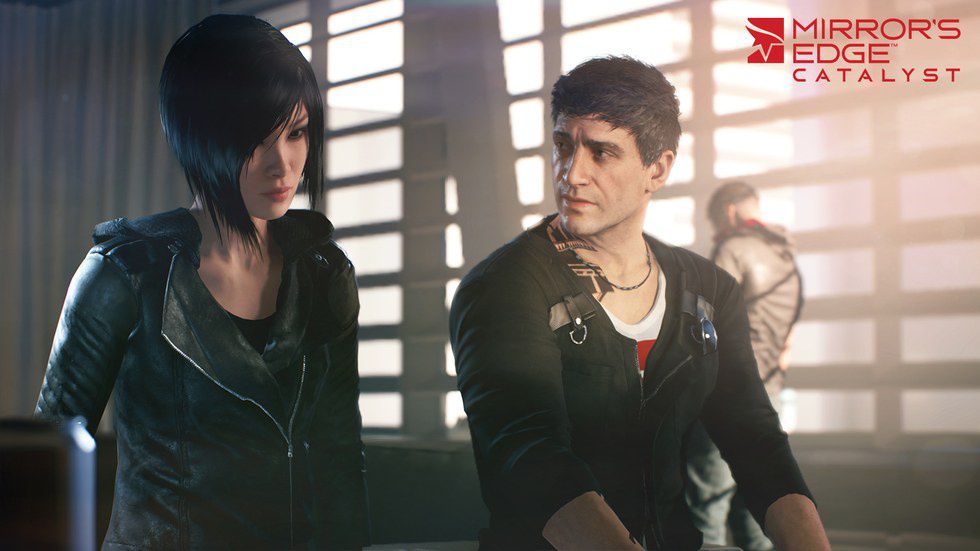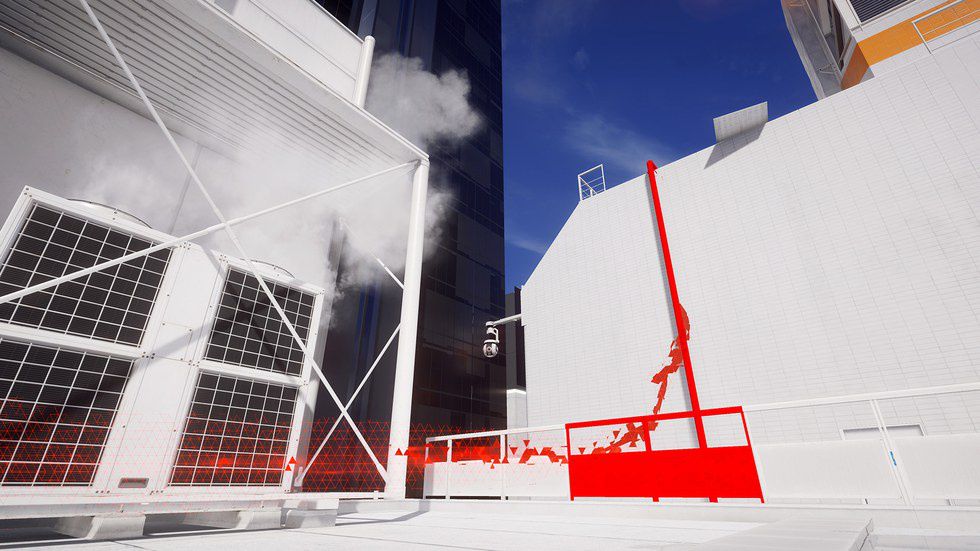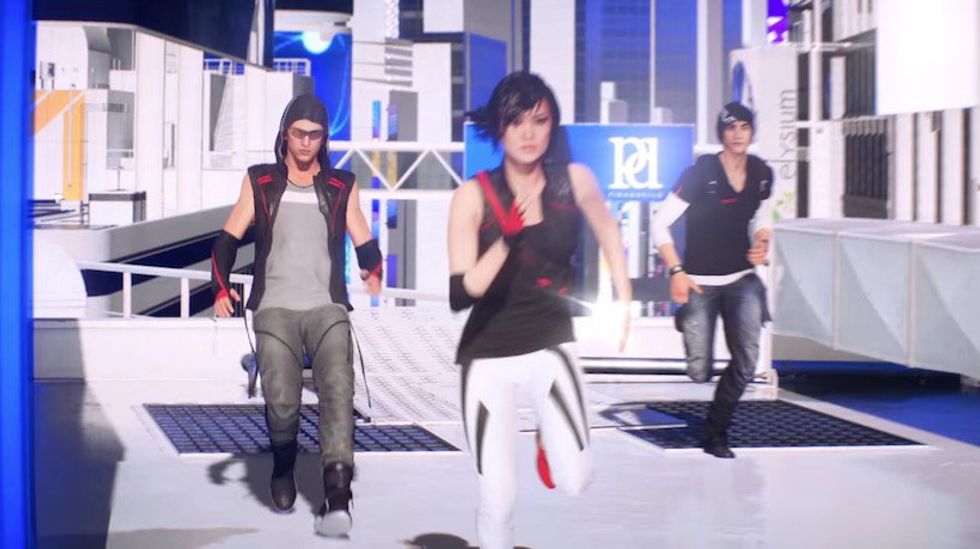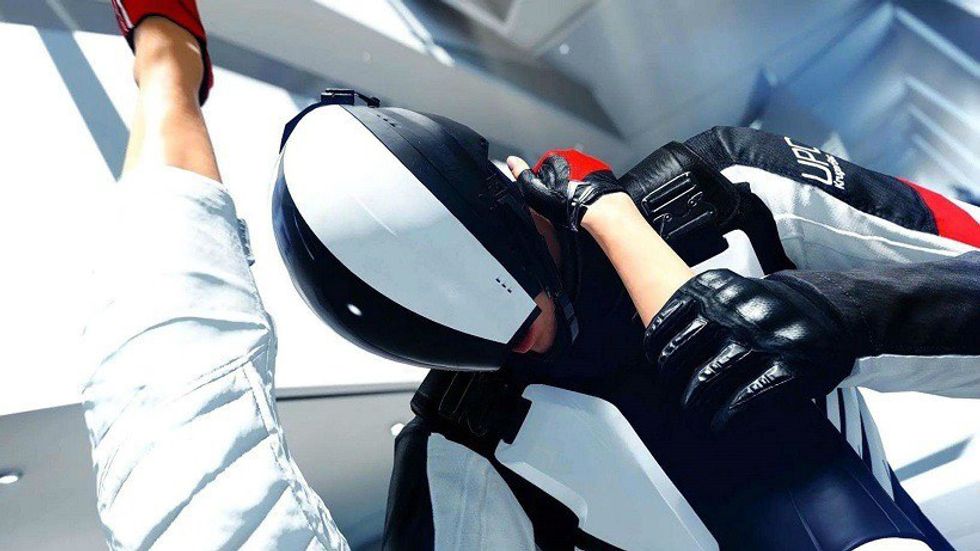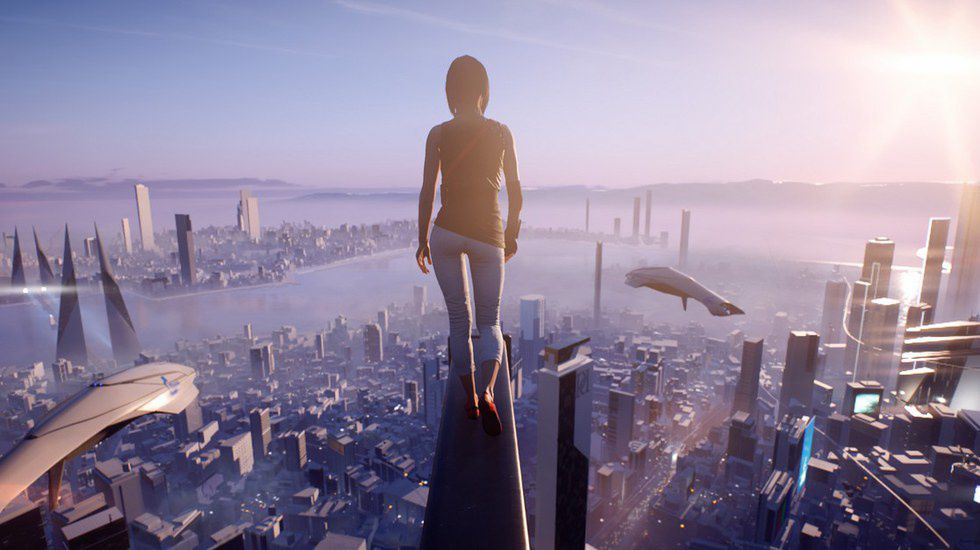"Catalyst" comes almost seven years after the first "Mirror’s Edge" game debuted. Faith’s strong heart and quick feet grabbed our attention in and took it for a joy run through the futuristic and mysterious city. The city, revealed as Glass in the new game, is where Faith has made her home and her living since she was a young girl. In "Catalyst," we rejoin Faith during her release from juvenile detention. She is spat back onto the streets of Glass and expected to find employment with one of the large corporations of Glass within 15 days. It takes her much less time than that to find a job. Waiting for her release is a runner sent by her old friend and boss, Noah. The runner, Icarus, provides Faith with a BeatlLink and information about Noah’s safehouse, and Faith begins her ascent back into the world of running. True to her nature, Faith isn’t a shadow for long. She quickly finds a way to piss off KSEC, Glass’s city watch, and boy, is this one hornet’s nest she shouldn’t have caved in. While Kruger Security (KSEC) patrols swarm the city, Faith works to pay off a debt to a former boss, regain Noah’s trust and find out what exactly a rival corporation is up to in Glass.
Recommended for you
Environment and graphics
Thank the video game gods the developers moved on from animated cutscenes with this game. The graphics in "Mirror’s Edge" weren’t top notch, but the cartoon version of Faith, Celeste and Noah always rubbed me the wrong way. "Catalyst" proves that the graphics designers are much more talented than the first game showed. Character movement is believable; reflections even exist! However, Faith still has that awkward sidestep and twist movement if you watch her moving in a black glass wall or elevator door (if that bugs you, just don’t do it).For all the improvements made to the game's graphics, the City of Glass is not as detailed as I’d hoped. Granted, runners are mostly located on rooftops, and detail is pretty minimal at the peaks of skyscrapers. Much buzz was made about the view — the view — when the city is finally revealed! When Faith approaches the edge to gaze out over her the jungle, the vista is mildly disappointing. Maybe that’s the hype. Either way, it doesn’t look like the developers put as much work into detailing the city as, say, those of "AC: Revelations."
Fortunately, all that work seems to have been put into improving the first person experience for the player.
Controls and movement
It is immediately apparent how much less dodgy the controls are than in "Mirror’s Edge;" however, some button combinations are a little clumsy in the hand. They might have seemed like a good idea to the developers and many beta testers, but this player, seasoned as she is, sometimes had Faith stumbling off ledges, missing springboard to wall runs, and climbing a lot of ladders and pipes to get back to the runner’s path. In an interview with Globku, Rurikhan remarked that one seemed not to have to look directly at obstacles to perform the correct moves to pass over, through or around them, as in the prequel. I found that statement to be not entirely true, which might have aided in my allowing Faith to flounder at some obstacles. Perhaps the controls will smooth out with time and through practice, but for now, I will suffer loading screens and repetitive gameplay tips between falls off the tallest buildings in Glass.
This time around, Faith is equipped with some shiny new gear — a MAGrope and a Disruptor — to aid her in reaching previously unexplored areas of the city. The MAGrope's magnetic grapple can be attached to metal security cameras to swing or climb quickly to different buildings. The Disruptor's electronics can, well, disrupt the power of machines like cooling fans and security cameras to help Faith remain a shadow
Runner's vision
Runner vision works basically the same way as it did in the
first game. The special ability is connected to the BeatLink, which is an
electronic device that allows the citizens of Glass to communicate with one
another as well as monitor happenings on the grid. The updated version of the red-tinged vision is equipped with something called the Runner's Echo, which is a path or ghost of a former runner moving through the space toward the next obstacle. As usual, not every obstacle selected by Runner's Vision is the most efficient for Faith to take. The highlighted path is a suggestion. The runner must use her better judgment to bend the environment to her will in traversing to different areas.
Side missions
Side missions are a necessary addition to the open-world gameplay. "Catalyst’s" developers took hints from popular open-world franchises, like Fallout and Dragon Age, to create the unique set of side missions in this game. The delivery, gridnode and securtiy hub side missions are a way to keep the player busy while rewarding with “scrips” — experience points that go toward upgrades in movement, combat and gear.
These things seem to pop up all over the place, which is fantastic for the player who enjoys completing every mission available in the game (who wouldn’t?). That being said, sometimes the waypoints for side missions cross paths with those of the selected mission’s waypoint. When running in the open world, nearby uncompleted missions are shown onscreen, and when multiple missions are active, these globes can become confusing the player and bring Faith to an area she did not intend to visit.
Most of the delivery missions are seemingly impossible toward the beginning of the game, and they may become tedious if the player continues to fail to make it to the delivery location on time. Once Faith starts racking up experience points from the main missions and purchasing upgrades to make traversing the city simpler, the timed missions get marginally faster. Notice I said faster, not easier. As the game mentions, sometimes the route picked out by Runner's vision is not the best or quickest. Additionally, sometimes the route to the waypoint is entirely unclear, leaving the player stranded between buildings or jumping toward a slick HVAC duct with no handholds.
The security hub missions are fast-paced, grab-n-go type experiences in which Faith must clear out a group of KSEC before permanently disabling a security antenna and getting the hell out of Dodge before KSEC helicopters and drones hone in on her. These have proven to be my favorite side missions, probably because time is still of the essence but not a major factor in completing the mission but just in moving fast enough to maneuver away from patrols.
Music
True to "Mirror’s Edge" style, music in "Catalyst" is minimal and ambient. It’s not annoying or intrusive in any way but not very memorable either, unlike the theme from the first game. Truth be told, there were many times when I never realized music was playing until I completed a mission or paused to take a breath after a particularly challenging mission. I guess that speaks to the intensity of the game and its ability to keep the player focused.
Combat
Enemies are perceptive and relentless, earning their intimidating role as city enforcers. These guys are not playing around, especially when Faith encounters some higher level enemies, like the shock enforcer. In contrast with the first game, Faith cannot pick up and use dropped city watch weaponry, which was a relief to me, since the first person shooter aspect of "Mirror’s Edge" was dodgy at best. Since Faith must rely on her fists to defend herself, combination moves of traversing and attacking lead to heavier damage dealt. Different enemies possess major and minor weaknesses that can be learned through the progression page.
Combat is smoother than in "Mirror's Edge;" however, it is evident that the combat engine was not upgraded between the games, which is understandable when one takes into account the fact that the game is focused largely around free running, speed and the idea of "flow," which is the successful traversing of obstacles with minor interference from heavy landings or having to think about the next path or move. It is a disappointing to see enemies drop like rag dolls after three hits. They're wearing helmets and protective outfits, after all, and not to take anything away from Faith, she's not that stout. Still, entering combat forces, the player to think on her feet (pun unintended), moving rapidly to avoid Faith being hit and to land hits of her own, and if players are unimpressed by the combat engine or prefer the route of a pacifist, there's always the option to run.
Companion app
Electronic Arts has also introduced a companion app for "Mirror's Edge: Catalyst," available for free on smartphone application stores. The app allows players to customize their runner tags, symbols of resistance that show up when players interact with billboards throughout the city. However, this is where the convenience and interactive ability of the companion app seem to halt. Other than the runner tags option, the app seems to be of little use.
Impressions
From minute one, "Catalyst" is a heart-pumping thrill ride, urging the player forward with the threat of extermination looming around every corner. The player must think quickly, following either runner vision’s suggestions or his or her own instincts to shake KSEC hunters, complete side missions within near impossible time limits, and regain her status as one of the fastest and most dangerous runners in the City of Glass. "Catalyst" is just as fast-paced as "Mirror's Edge," but I wouldn't call it "Mirror's Edge 2" any more than I would call it a reboot of the series. There are clearly still some bugs to be worked out in the combat and movement areas, and smoothing these out is paramount for a game so focused on the first person runner perspective. That being said, this is a beautifully constructed game with a compelling narrative, and for the nostalgic or the newcomer, "Mirror's Edge: Catalyst" will not disappoint.


